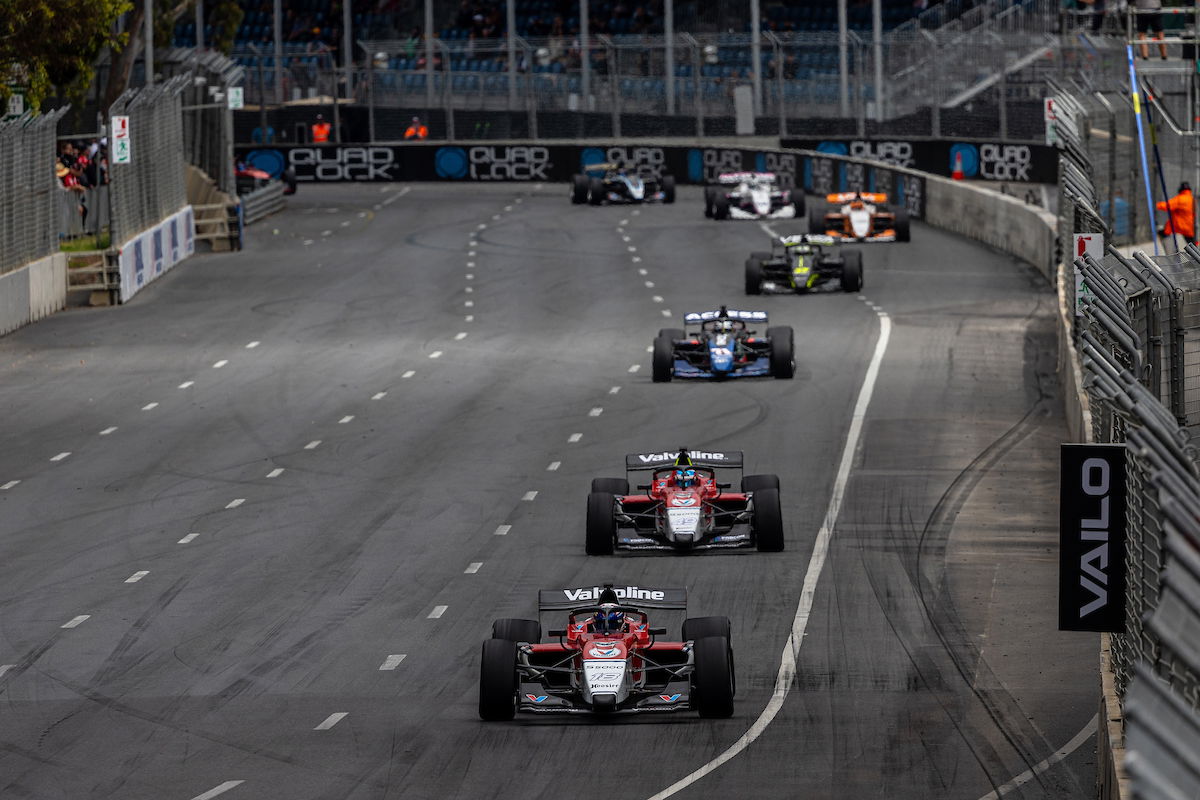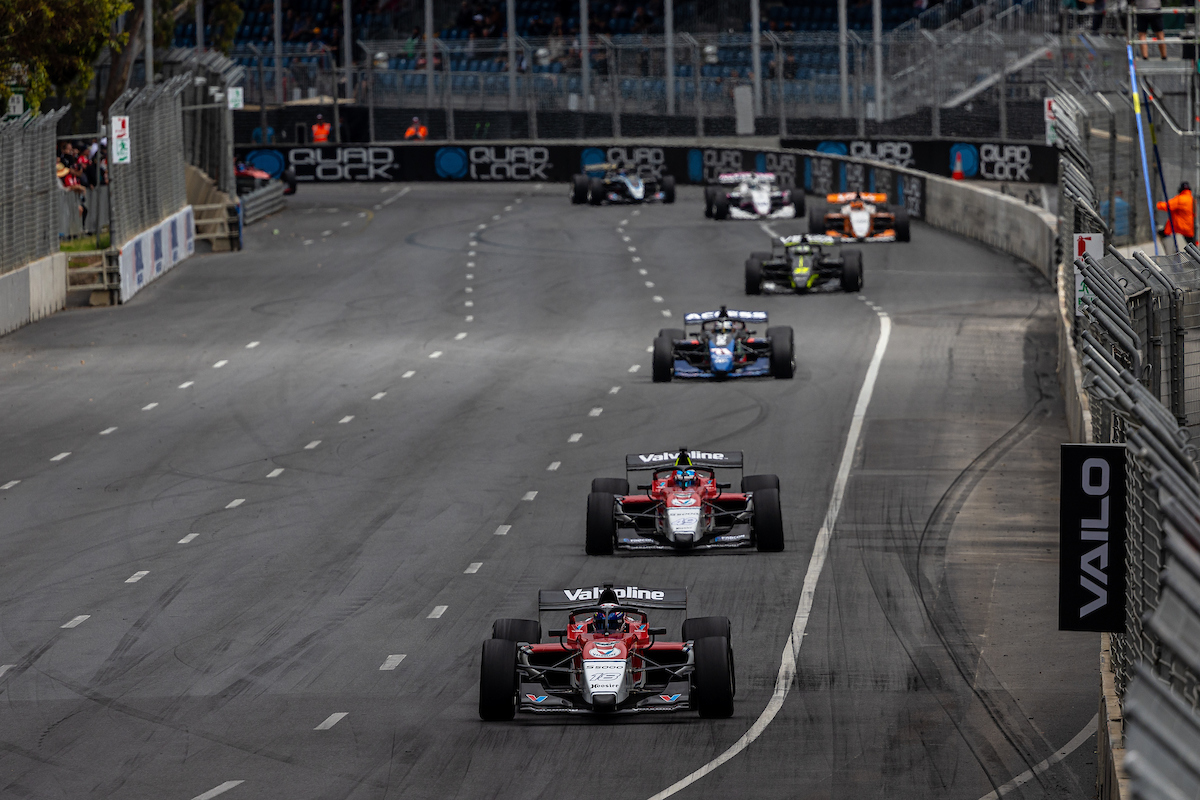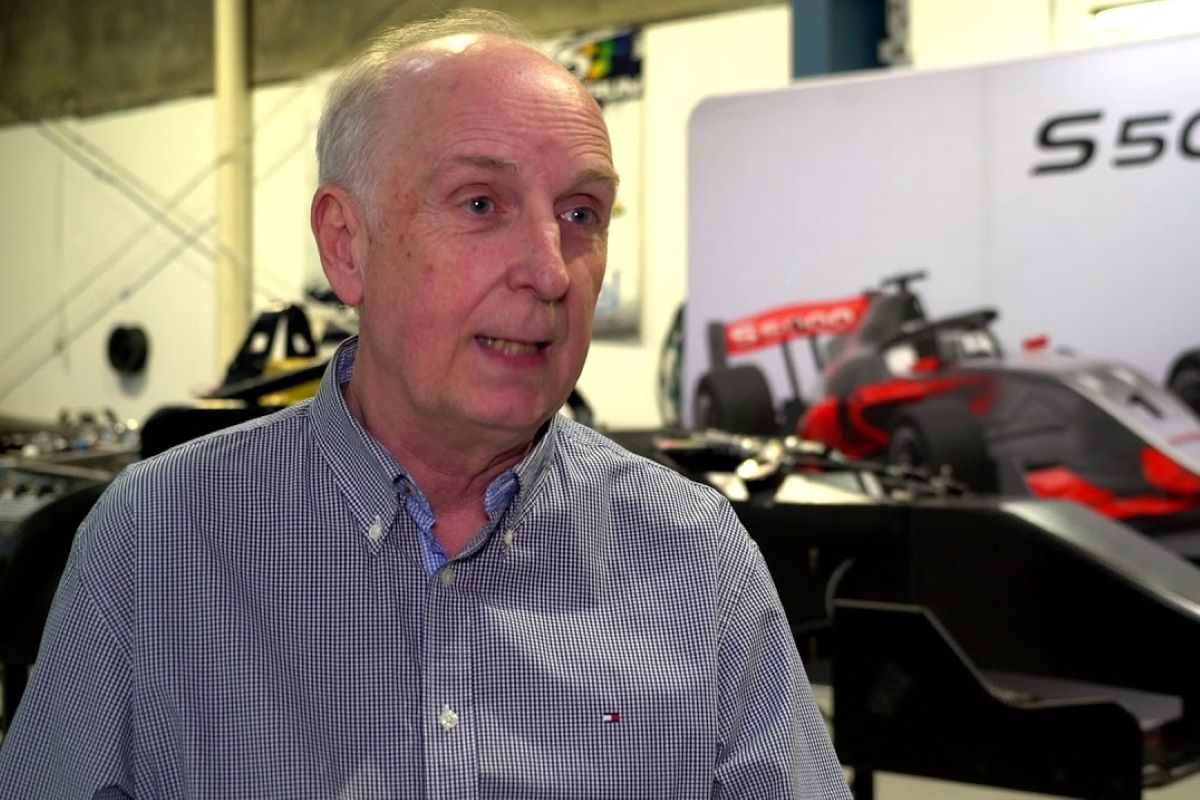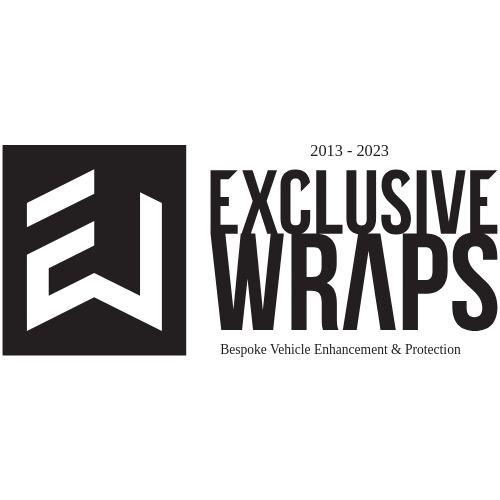

S5000 creator Chris Lambden has issued a plea to save the category from impending doom by forcing Supercars to open up its driver eligibility rules.
For months now, there has been speculation about the demise of the category, which cannot reliably produce grids any larger than single digits.
Now Lambden, the brainchild behind the retro-styled ‘Formula Thunder 5000’ concept which eventually morphed into S5000, has penned an open letter in the hope of salvaging the V8-powered open-wheeler competition.
Once contracted to the Australian Racing Group which owns the category, he retains a financial interest in its success as a co-owner of a particular car, and a stakeholder as its creator.
Lambden claims in his open letter that there is still no 2024 S5000 calendar and that ARG’s majority shareholder, Barry Rogers, is willing to ‘park’ the cars if the “discriminatory” licencing criteria are not dropped.
The latter claim is consistent with comments in recent months from Rogers himself, who threatened in 2022 to sell the cars overseas due to a Motorsport Australia Superlicence obstacle.
S5000 originally did not pay Superlicence points and, once added to the points matrix, other changes made at the same time meant Super2 became virtually compulsory for Australian-based drivers if they wished to progress to the top tier of Supercars.
While the rules were eventually relaxed, it became apparent that Supercars would continue to enforce the Super2 requirement amid a saga in 2022 over whether Super3 driver Michael Anderson was eligible for a Superlicence or not.
Motorsport Australia announced in July that it was scrapping the Superlicence from 2024, given it had been rendered redundant by a ban on provisionally licenced drivers from competing in Supercars and the championship’s own eligibility rules.
In his long open letter (reproduced in full below), Lambden argues that the V8-powered, rear-wheel-drive S5000 vehicles are an adequate means of grooming drivers for V8-powered, rear-wheel-drive saloon cars.
He cites the famous names who graduated from Formula Holden to the Australian Touring Car Championship in the 1990s, and the case of German Formula 4 champion Joey Mawson, who was in a battle to obtain a Superlicence before being suspended over supplement use.
Formerly a racer himself and then a publisher, Lambden has also called on Motorsport Australia to “step up” and force Supercars to allow S5000 drivers to enter its championship without going through Super2 (noting eligibility may also be attained by way of an FIA Gold ranking).
He adds in his letter, “I have a sense that MA is slightly ‘uncomfortable’ with S5000 – maybe because it’s not part of the FIA’s Formula 4/3/2 official F1 pathway.
“There have been technical restrictions applied that don’t equally apply to other categories, and so on – and none of that has helped.
“Right now, if the Supercars Board itself cannot understand the degree of discrimination/anti-competitive behaviour it is promoting and end it, then MA needs to re-assert who runs motorsport in Australia; that the Super2 ‘compulsion’ is ended. Now.”
He goes on to applaud the decision to address the other factor which he believes has been holding S5000 back, namely that most of its races were behind a paywall on Stan Sport.
Ironically, it is Motorsport Australia which has returned the Shannons SpeedSeries to the Seven Network for an entirely free offering spread across terrestrial television and the 7plus streaming service, after it took back control of broadcasting rights.
It was ARG which had control of the television deal when the SpeedSeries moved from Seven to Stan Sport in 2022.
According to Lambden, “With the Superlicence barrier removed, [S5000] can re-assert itself as a challenging, worthy category in Australian motorsport.”
He also used his open letter to advocate for a ‘summer’ calendar, evoking memories of the original Tasman Series which featured the cars which ultimately inspired S5000.
See below for open letter

S5000 – an Open Letter
The year is drawing to a close and, after some 18 months trying to assist in resolving a couple of behind-the-scenes issues that have been and continue to negatively affect the car/category I played a part in creating, it is time to update interested parties, the motorsport industry and public, in the hope that the issues can be resolved and S5000 be allowed to re-establish itself on merit.
As it stands, no S5000 driver, of even the highest standard, can accept a drive with a Supercars team. (The same applies to a number of other relevant categories in the sport). A sensible Motorsport Australia (MA) system to acquire Superlicence-qualifying points through success across a range of categories – very much like the FIA system applying to F1 – has ultimately been replaced by Supercars’ own requirement that you cannot race a Supercar unless you have completed six races (ie a season – budget $600k+) in a Super2 car. (This was recently modified to excuse top-three Carrera Cup and Super3 drivers. Porsche spends significant dollars with Supercars …).
Originally, the Super2 option was introduced as an ‘alternate’ means of Supercars Superlicence qualification, if a driver didn’t quite have the required points. Fair enough – but somewhere along the way the wording changed from ‘alternately’ to one of compulsion.
This is completely wrong and indefensible. Super 2 was created (by Supercars) primarily as a means of off-loading its old cars, and yes, it has been one of the options in terms of acquiring Superlicence points. But the day (last year) when it became a compulsion, Supercars entered into a world of discrimination, anti-competitive behaviour, restraint of trade and so on, totally unacceptable in 21st century Australia.
After S5000’s parent organisation Australian Racing Group (ARG), raised the issue with MA – they understood the ramifications – MA’s reaction, somewhat bizarrely, was to end the Superlicence points system, which has achieved nothing, because Supercars has continued with its ‘compulsory’ Super2 requirement. So, the standard required to drive in Supercars is now ($600k) cash-based.
This has led to some appalling outcomes – the most obvious being the case of double Gold Star champion (and former German F4 champion) Joey Mawson, with points to burn, who was told in February of this year, literally while testing for PremiAir (a co-drive was in fact offered) that “If you think you’re going to race one of these cars without doing six races in Super 2, you’re dreaming …”
That is unacceptable – and the protestation that half a dozen races in an old model car is an essential ‘safety’ issue, better preparing drivers for Supercars, is ridiculous when you recall that the likes of Skaife, Lowndes, Bright, Kelly, Murphy, Larkham, Bargwanna, and more, all moved directly from Formula Holden (the 1990s predecessor to S5000) to Supercars – and they did okay, didn’t they! More recently, time spent in S5000 by Thomas Randle and James Golding (who qualified for a Superlicence prior to the rule change) has clearly been beneficial.
This issue has harmed S5000 significantly – the inability to move to Supercars, if offered, deterring numbers of quality new entrants.
Right now, there is a stalemate. ARG owner Barry Rogers has drawn a line in the sand – if the Superlicence issue isn’t resolved, they may ‘park’ the S5000 cars. To date, MA has not been able to insist that Supercars abandon the discriminatory regime. There is currently no calendar in place for 2024.
S5000 – conceived, designed and developed in Australia – is a great example of the excellence within Australian motorsport engineering, and a challenging single-seater formula. Feedback suggests the Australian motorsport public loves the category.
Right now, Motorsport Australia needs to step up. It is affiliated to the FIA; Supercars is an FIA-recognised category; organisations such as the FIA don’t accept any form of discrimination …
To be honest, to date, I have a sense that MA is slightly ‘uncomfortable’ with S5000 – maybe because it’s not part of the FIA’s Formula 4/3/2 official F1 pathway. Who knows. There have been technical restrictions applied that don’t equally apply to other categories, and so on – and none of that has helped.
Right now, if the Supercars Board itself cannot understand the degree of discrimination/anti-competitive behaviour it is promoting and end it, then MA needs to re-assert who runs motorsport in Australia; that the Super2 ‘compulsion’ is ended. Now. Continuation of the Superlicence points system, rather than dumping it, might be a logical conclusion.
It would add to the good news recently of the return of free-to-air TV to the MA SpeedSeries next year – great news and a tick in the MA box. It was, in my view, ARG’s decision to prematurely go for a pay-TV deal two years ago with a relatively small provider, and the resultant significant drift in audience (and thus sponsor value) that affected all ARG categories, that has been the other negative haunting S5000. That is now fixed.
Where to now for S5000? With the Superlicence barrier removed, it can re-assert itself as a challenging, worthy category in Australian motorsport. My personal original concept for S5000 was that it would contest a compact, focussed, five-round series in the late September-November window – like BBL, or TRS in NZ – when much of the European/US motorsport season is over. That didn’t eventuate. Maybe these circumstances will re-ignite that plan …
Chris Lambden





















Discussion about this post